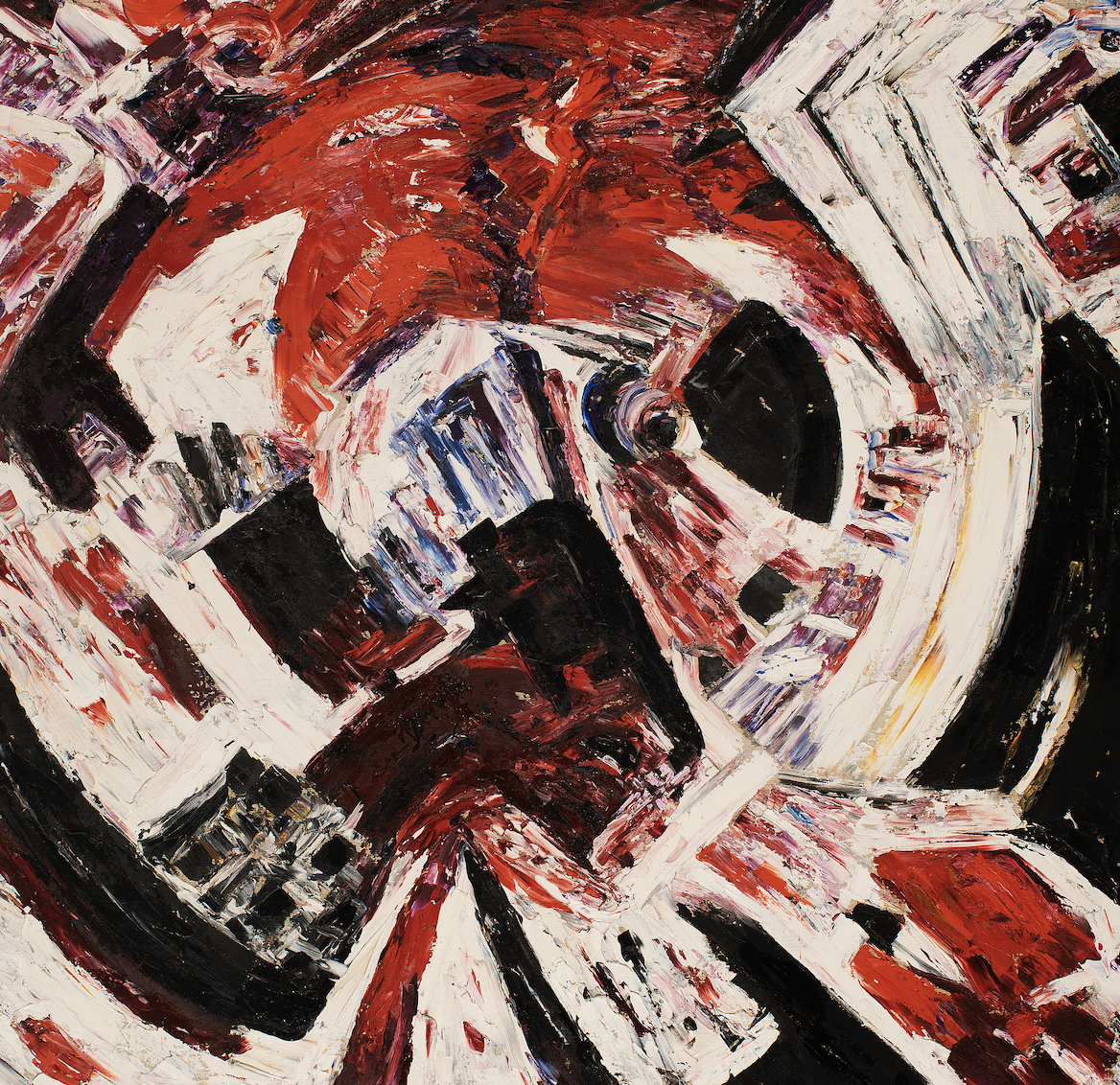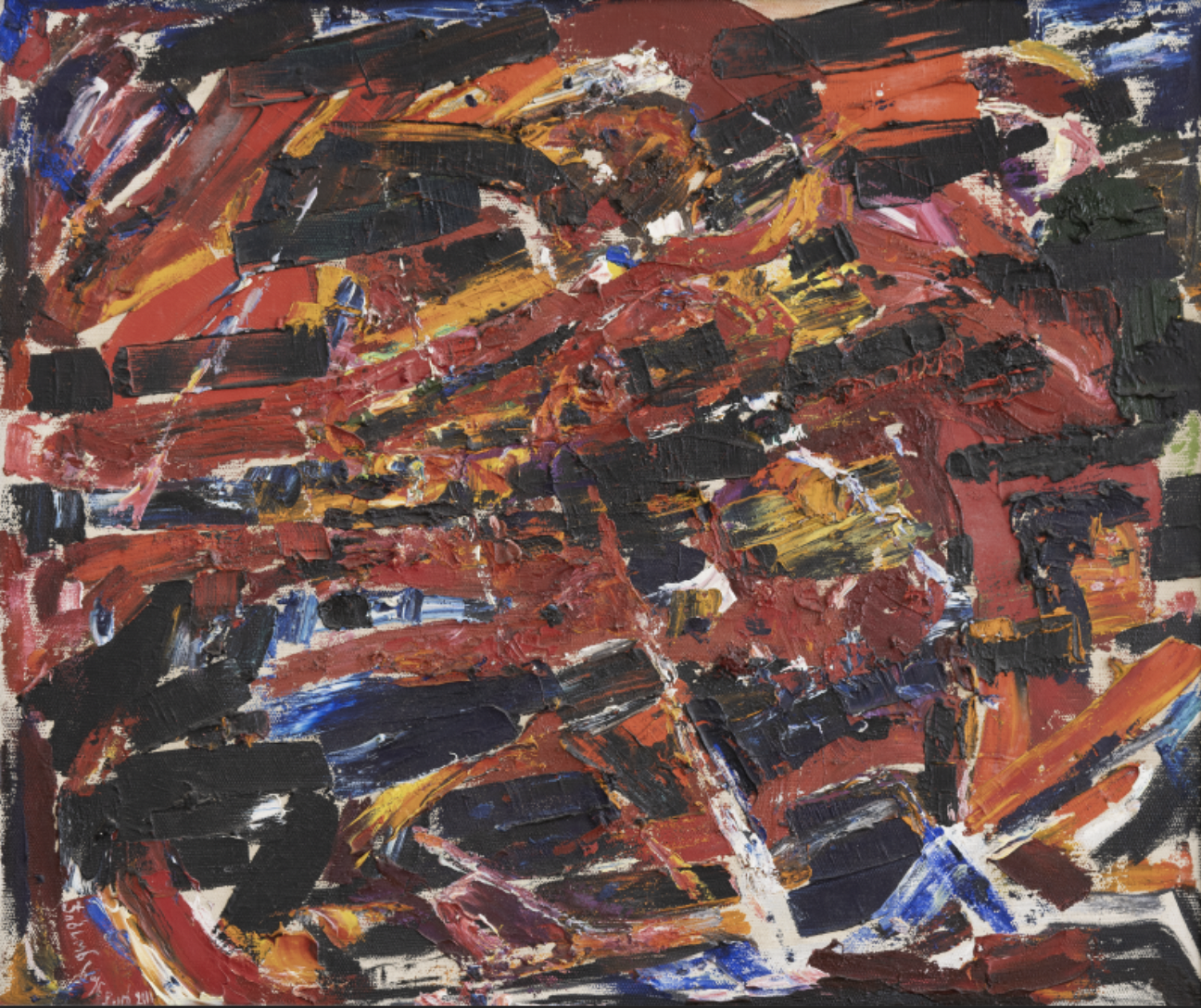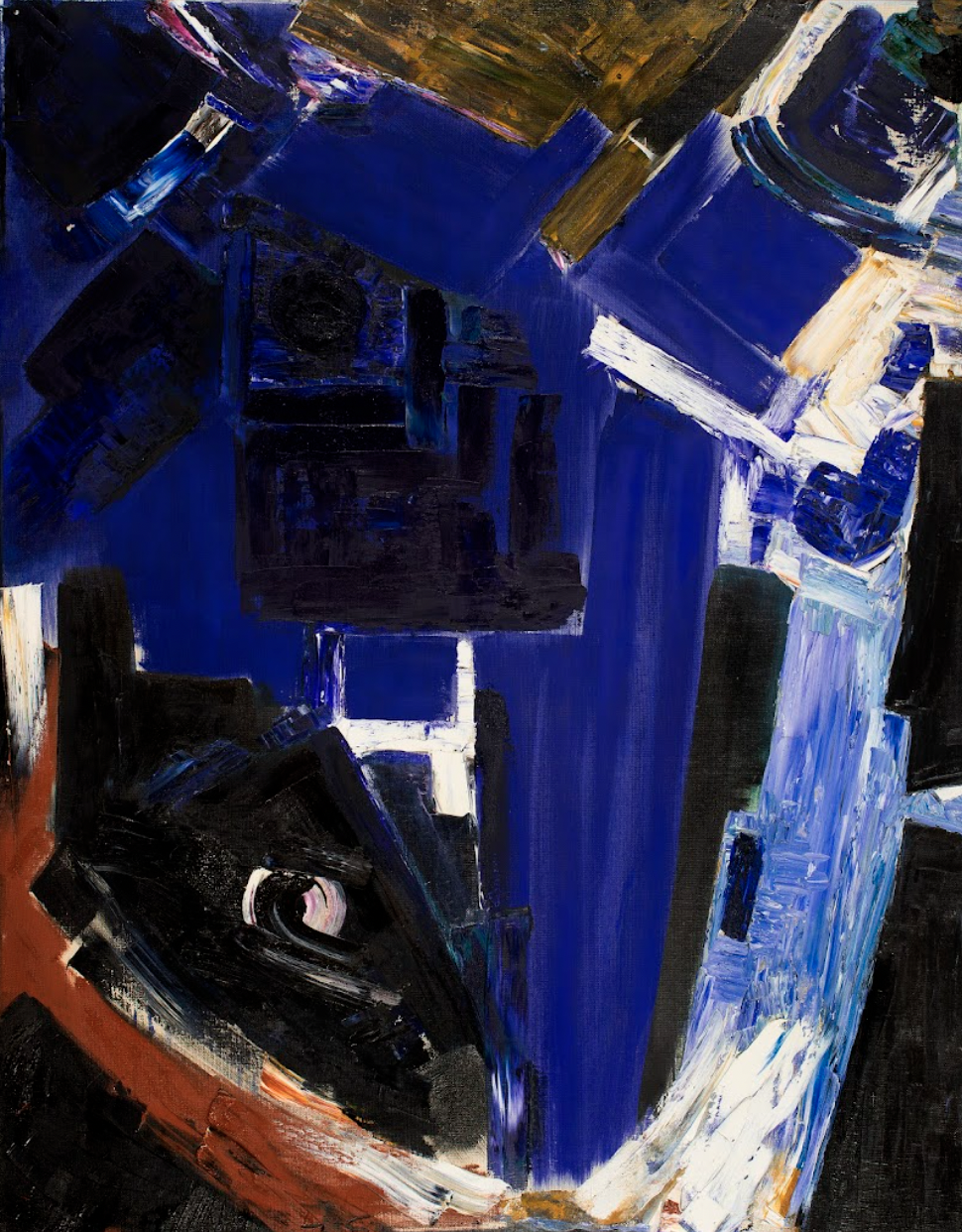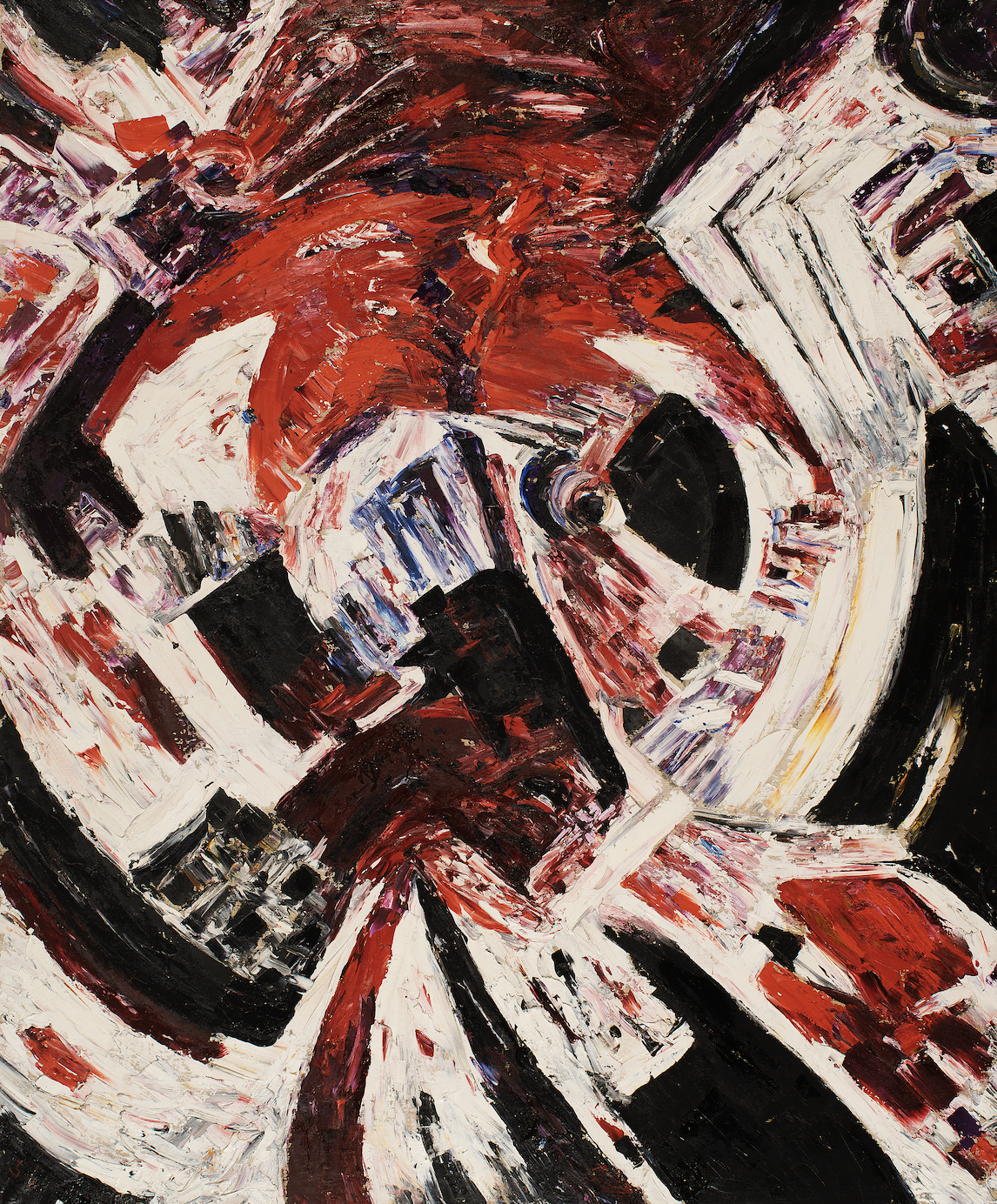
Feel free to add tags, names, dates or anything you are looking for


Jibson Khundadze (1927-2022) was one of the foremost representatives of the second stage of abstract art in Georgia. He studied at the Tbilisi State Academy of Arts in 1945-52. It was the time when socialist realism was canonized in all fields of Soviet cultural production. The title of his diploma work - "The Rally in Batumi" - proves that at that time everyone had to follow the official requirements. But despite the contradictions, even in his student years, the form of expression was most important to him. In the 1940s and 1950s, during the restrictive Soviet regime, he created non-objective art pieces underground, defying official bans. It was an expression of loyalty to his own creative credo. His poetic vision of nature guided his path, be it through landscape or living figure. Even though Khundadze was a great master of color and brushstrokes, which is especially evident in his abstract compositions, his painting was deeply inspired by the dynamism of nature and its powerful energies at every stage. His poetic vision of nature guided his path, be it trough landscape or living figure. The deeper he explored the visible reality that captivated him, the more invisible, abstract worlds unfolded before him, and the more non-objective his pictorial compositions became. Yet beyond his brushstrokes and within the structure of his compositions, one can always observe the profound, philosophically realized emotion derived from the artist's perception of the mountains, valleys, rivers, and skies of Georgia.
To master the transfer of emotion and thought into the language of painting and the appropriate techniques of expression with paint, Jibson Khundadze, even in the mid-1940s, became thoroughly acquainted with the works of French Impressionists, Post-Impressionists and Neo-Impressionists. We say "even," because this was still Stalin’s epoch, and Western tendencies were forbidden in the Soviet Union. Nonetheless, reproductions of works by Pissarro, Renoir, Manet, Monet, Degas, Van Gogh, Seurat, Signac, and other French artists were available to Khundadze. Their influence is vivid in many of his early works. And yet, he processed what he saw and studied in a distinctive and expressive manner, resulting in his own original style.

Jibson Khundadze. Abstraction. Oil, canvas. 95x86. 1983. This work is part of ATINATI Private Collection

Jibson Khundadze. Constructive Landscape. Oil, canvas. 61x50. 2000. This work is part of ATINATI Private Collection
He was inspired by the mountainous landscapes of Georgia, a fact proven by the titles of his compositions: ‘In Truso Valley,’ ‘Snowy Mountain,’ ‘Rocky Dariali,’ ‘Khevsureti,’ ‘Red Mountains,’ ‘Karchokhi Pass,’ and others. In his paintings, we rarely see views of nature, but we always feel its fury, strength, and sound; the architecture of his works directing us towards it. The artist's hand creates these compositions, driven by the strength of the living environment and the noise or silence that he sensed there. The pictorial brushstrokes on Khundadze's canvases are focused on almost circular patterns that swirl towards the depths, intertwining with each other and forming a central composition. This is how Jibson Khundadze's structurally complex cosmic landscapes are constructed.

Jibson Khundadze. Composition. Oil, canvas. 178x144. 1990. This work is part of ATINATI Private Collection
Abstraction refers to non-mimetic art. It is not by chance that it has such synonyms as non-objective and non-figurative. Yet, Khundadze's abstract compositions retain a sense of mimesis. We are convinced of this when we observe the gradual development of his creative work; when we see how mountains, ravines, waterfalls, and streams are turned into picturesque masses on his canvases. Regardless of their abundance and richness, his strokes are always structural, with each brush motion contributing to the overall composition and seeking to create one whole system.
In addition to the philosophy of landscape, biblical motifs have an important place in Jibson Khundadze's creative work: The Crucifixion, Christmas Eve, and more.

Jibson Khundadze. Untitled. Oil, canvas. 96,3x103. 1966. This work is part of ATINATI Private Collection
After World War II, Jibson Khundadze developed abstract expressionism in his work. In Soviet reality, such creators were extremely rare. With their assistance, the avant-garde drive in Georgian art continued, and Western tendencies evolved. When the “iron curtain” opened in the 1990s, Jibson Khundadze's abstract painting was among the most important discoveries for both Georgian and foreign art specialists and enthusiasts.

Jibson Khundadze. Coded structure. Oil, canvas. 202x165. 1988. This work is part of ATINATI Private Collection
Jibson Khundadze was a monumentalist. This is seen not just in the size of his paintings, but also in their structure, which dictates their scale. In 1970, the state commissioned him to design a stained-glass window for the exterior of the Griboedov Russian Drama Theater in Tbilisi, titled "O azure sky, O emerald earth, My one and only cherished land." This line from Akaki Tsereteli's poem describes the content of Khundadze’s entire work, as the artist's vision arose from Georgian nature, which found large-scale generalization in his abstract landscapes.